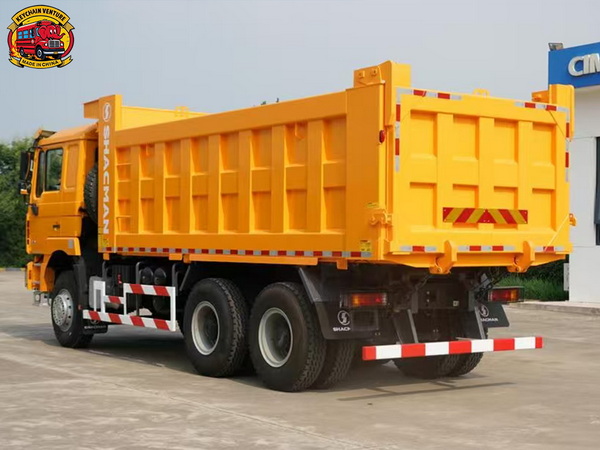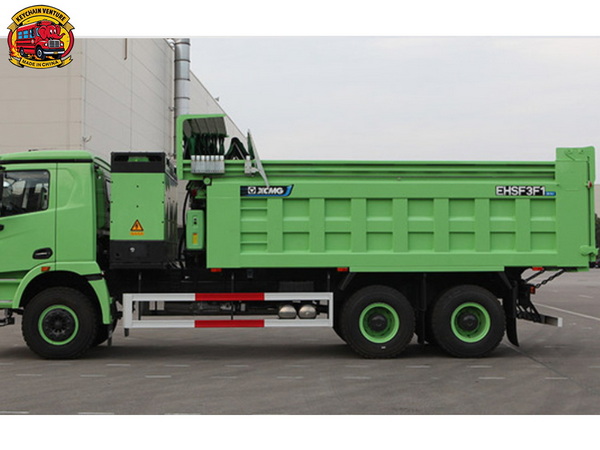







Content Menu
>> Articulated Dump Trucks (ADTs)
● Payload, Capacity, and Weight
● Safety Features and Compliance
● New vs Used: Strategic Choices
● Financing and Ownership Costs
● Inspection and Due Diligence
● Operational Fit: Matching to Projects
● Lifecycle and Resale Considerations
● Origin, Warranty, and Support
● Global and Local Considerations
● Step-by-Step Purchase Blueprint
>> 1) Define the use case and site conditions
>> 2) Set a realistic budget and financing plan
>> 3) Shortlist trusted suppliers and models
>> 4) Conduct a thorough evaluation and test
>> 5) Negotiate and finalize terms
>> 6) Prepare for delivery and deployment
>> 7) Post-purchase monitoring
● Industry Trends Shaping Choices
● Operational Excellence: Maintenance and Training
● Global Market Considerations
● FAQ
>> 1. What should I prioritize when evaluating a Dump Truck for heavy-duty work?
>> 2. How does one determine if a Dump Truck is right for a specific material type?
>> 3. What are the key maintenance practices to maximize uptime?
>> 4. Are there advantages to leasing rather than purchasing a Dump Truck?
>> 5. How should a buyer handle cross-border Dump Truck purchases?
Purchasing a Dump Truck is a strategic decision that impacts fleet performance, maintenance schedules, and overall project efficiency. For a leading commercial vehicle supplier like KeyChain Venture Co., Ltd., understanding the full landscape—from vehicle configurations and payload capabilities to lifecycle costs and financing options—ensures clients receive vehicles that maximize uptime and return on investment. This guide expands on the essentials of buying a Dump Truck, including operational fit, durability considerations, and practical steps to secure a dependable, high-performance asset for domestic and international customers alike. Throughout, the focus remains on practical decision-making, industry best practices, and the latest market dynamics shaping Dump Truck choices in 2025 and beyond.

Dump Trucks come in a range of configurations designed to handle different materials, terrains, and regulatory environments. A clear grasp of each type helps buyers align vehicle selection with project requirements and site conditions.
- Rigid-frame designs with hydraulic beds are well-suited for urban construction, civil projects, and material transport between close-by sites. These models emphasize ease of maintenance, predictable handling, and consistent payload performance.
- Payload ranges vary by model, but commonly serve contractors needing reliable cycle times and straightforward servicing.
- ADTs feature a two-part articulation joint between the cab and the dump bed, enabling superior off-road mobility and stability on uneven terrain. They excel in rough terrain, quarry work, and remote locations where traditional rigid trucks struggle.
- Considerations include ground clearance, travel speed on rough surfaces, and maintenance accessibility for both the powertrain and articulation joints.
- These configurations incorporate a separate trailer or multiple trailers to expand payload capacity and flexibility for longer hauls or diverse job sites. They are often selected for heavy material transport over longer distances where efficient loading/unloading cycles are essential.
- Steel bodies deliver rugged durability and cost-effectiveness for abrasive or heavy loads but add weight.
- Aluminum bodies offer lighter weight, improved fuel economy, and corrosion resistance—benefiting projects with frequent corrosion risk or high cycle loads.
- Composite or specialty bodies may be chosen for specific materials or regulatory advantages, balancing weight, cost, and lifecycle considerations.
- Engine power and torque determine the ability to lift loads, climb grades, and sustain fuel efficiency across typical duty cycles.
- Transmission choice (automatic vs. manual) affects driver fatigue, especially in repetitive loading/unloading patterns, and maintenance profiles.
- Axle configurations and suspension systems influence payload distribution, ride quality on varied terrain, and tire wear.
- Cab design, visibility, and control layout affect operational safety and efficiency, particularly on congested sites or in urban environments.
- Brake systems, stability controls, and rollover mitigation play critical roles in safe dumping operations, particularly when loads are high or materials are dense.
- Payload capacity should align with daily material targets while considering legal gross vehicle weight restrictions for the intended routes and jurisdictions.
- Some markets impose different axle weight limits for front and rear axles, which directly influence overall vehicle choice and configuration.
- Modern Dump Trucks incorporate advanced safety features such as backup cameras, payload sensors, stability systems, and proactive maintenance alerts.
- Compliance with local laws, environmental standards, and safety regulations is essential, especially for cross-border operations and fleet-wide utilization.
- Telematics enable real-time monitoring of engine performance, fuel consumption, tire pressure, and preventative maintenance scheduling.
- Connectivity supports fleet optimization, route planning, and data-driven decision-making to reduce downtime and extend the vehicle's service life.
- Electric and hybrid Dump Trucks are increasingly available, offering lower emissions, potential fuel savings, and compliance with stricter regulatory regimes.
- New Dump Trucks provide the latest technology, warranty coverage, and predictable maintenance horizons but require higher upfront investment.
- Used Dump Trucks can deliver substantial cost savings and faster deployment but demand thorough due diligence, including mechanical inspections, maintenance histories, and residual value assessment.
- Financing arrangements often include dealer-backed loans, bank loans, and specialist fleet financing. Terms depend on creditworthiness, down payment, and collateral considerations.
- Total cost of ownership includes depreciation, insurance, registration, maintenance, parts availability, and potential downtime costs during repairs.
- A structured budget approach helps align capital expenditure with expected project timelines and cash flow.
- A comprehensive pre-purchase inspection should cover frame integrity, hydraulics, structural welds, bed condition, tires, brakes, and engine/ drivetrain health.
- Service records, accident history, and past maintenance patterns provide insight into remaining useful life and potential future expenditures.
- For used Dump Trucks, a certified third-party inspection can mitigate risk and reveal hidden issues not obvious in a visual review.
- Project type, terrain, and seasonal workload should drive truck selection. For example, urban civil works may favor standard Dump Trucks with good maneuverability, while mining or aggregate operations may require ADTs with superior off-road performance.
- Site accessibility and the availability of maintenance support at the work location influence after-sales service expectations and uptime.

- Consider the total lifecycle costs, including resale value, because certain configurations maintain value better in specific markets.
- Regular maintenance and timely component replacements preserve residual value and ensure ongoing reliability.
- Training for operators and maintenance staff contributes to safer operations and longer vehicle life.
- Purchasing from authorized OEM dealers or established distributors helps ensure access to genuine parts, factory-trained technicians, and standardized warranty coverage.
- Extended warranties or maintenance contracts can provide predictable cost control and reduce unexpected repair expenses.
- Cross-border operations require compliance with customs, import taxes, and vehicle registration processes. Ensuring documentation and service networks are in place reduces delays and operational disruption.
- Local environmental and emissions regulations may influence engine choice, fuel type, and permissible load configurations.
A practical, multi-step approach helps buyers move from concept to delivery smoothly.
- Clarify the material type, typical loads, haul distances, and terrain to drive the required payload, bed style, and powertrain.
- Align these specifications with regulatory limits for weight and emissions in the operating regions.
- Determine total ownership cost, including purchase price, insurance, maintenance, and potential downtime.
- Explore financing options with dealers and financial institutions to secure favorable terms.
- Prefer OEM-backed dealers and brands with robust service networks, readily available parts, and transparent warranty terms.
- Evaluate models that match the defined payload, duty cycle, and terrain requirements.
- When possible, arrange for product demonstrations or on-site trials to observe performance under representative loads and conditions.
- Obtain references from other customers in similar industries or geographies to gauge reliability and service support.
- Seek favorable warranties, maintenance packages, and parts supply commitments.
- Confirm delivery schedules, service level agreements, and training provisions for operators and maintenance staff.
- Ensure registration, insurance, and compliance documentation are in order.
- Plan for driver training, maintenance scheduling, and spare parts availability to maximize uptime from day one.
- Establish a KPI-driven framework for uptime, maintenance costs, fuel efficiency, and load performance.
- Use telematics to monitor real-time data and optimize fleet performance.
- Electric and hybrid Dump Trucks are becoming more common, driven by emissions regulations and total cost of ownership considerations.
- Telemetry and advanced driver-assistance systems are increasingly standard, enabling better safety and predictive maintenance.
- Demand for durable, low-maintenance configurations remains high in remote or challenging environments, with manufacturers focusing on rugged components and easier serviceability.
- Implement a preventive maintenance schedule tailored to the duty cycle, environmental conditions, and material types handled.
- Maintain a readily available parts inventory and establish service partnerships for timely repairs.
- Invest in operator training for efficient loading/unloading techniques and safe driving practices to minimize wear and increase productivity.
- Buyers should assess currency risk, import duties, and local certification requirements when procuring Dump Trucks for international use.
- Local dealer networks play a key role in after-sales support, ensuring quick access to parts and qualified technicians.
Choosing and purchasing a Dump Truck is a strategic decision that influences fleet reliability, project efficiency, and long-term financial performance. By understanding the alternatives, assessing operational needs, evaluating total cost of ownership, and engaging with trusted suppliers, buyers can make informed decisions that deliver durable, high-performance vehicles capable of meeting evolving project demands. Leveraging current market trends and practical due diligence will empower clients to secure Dump Trucks that support growth and profitability.

Priorities include payload capacity, engine torque, transmission suitability, frame strength, bed geometry, and safety features that align with site conditions and regulatory requirements.
Consider material density, abrasiveness, moisture content, and unloading requirements; these factors influence bed design, material flow, and wear patterns.
Establish a preventive maintenance schedule, monitor fluid quality, replace wear parts proactively, and use telematics to anticipate failures before they occur.
Leasing can provide lower upfront costs, easier fleet scaling, and predictable monthly expenses, while ownership offers long-term asset value and potentially lower lifetime costs with proper maintenance.
Ensure compliance with import regulations, secure proper warranty coverage across borders, arrange service and parts availability in destination regions, and verify currency and financing terms align with local requirements.
[1](https://www.buyerzone.com/transportation/dump-trucks/bg-dump-trucks-introduction/)
[2](https://www.doggettequipment.com/support/resources/buying-guides/articulated-dump-truck)
[3](https://www.loadkingmfg.com/dump-truck-a-complete-guide-to-help-you-buy-a-new-or-used-waste-hauling-vehicle/)
[4](https://www.bidadoo.com/buying-guide-trucks/buying-guide-dump-trucks/)
[5](https://dumptruckdispatcher.com/resources/are-used-dump-trucks-worth-it-heres-what-to-consider/)
[6](https://www.youtube.com/watch?v=cyoQDSvhYck)
[7](https://www.facebook.com/groups/669643846539597/posts/2704065023097459/)
[8](https://www.know-howequipment.com/industry-news/dump-truck:-a-complete-guide-to-help-you-buy-a-new-truck.html)
[9](https://www.boomandbucket.com/blog/ultimate-off-highway-dump-truck-buying-guide)
[10](https://www.topmarkfunding.com/the-ultimate-guide-to-choosing-the-right-dump-truck/)